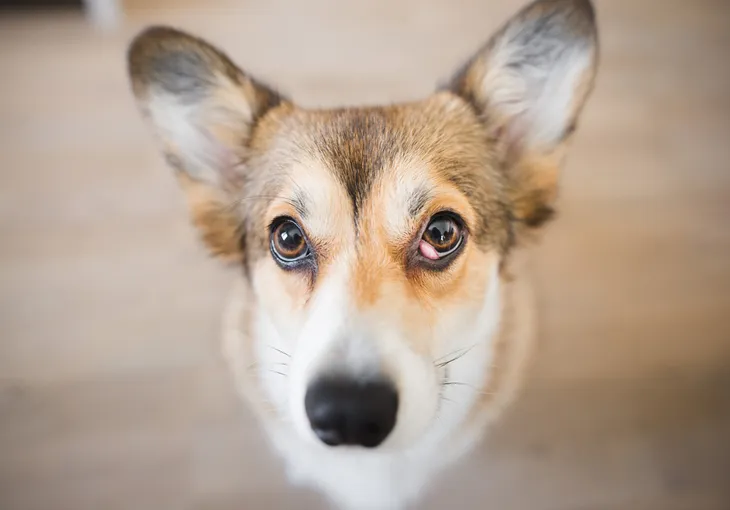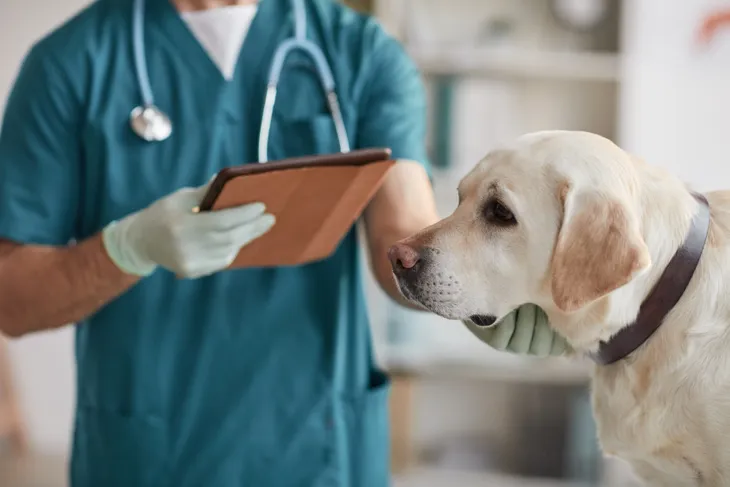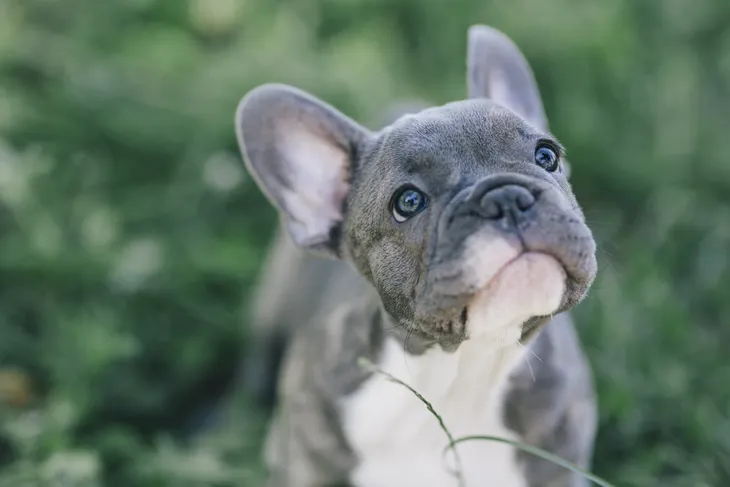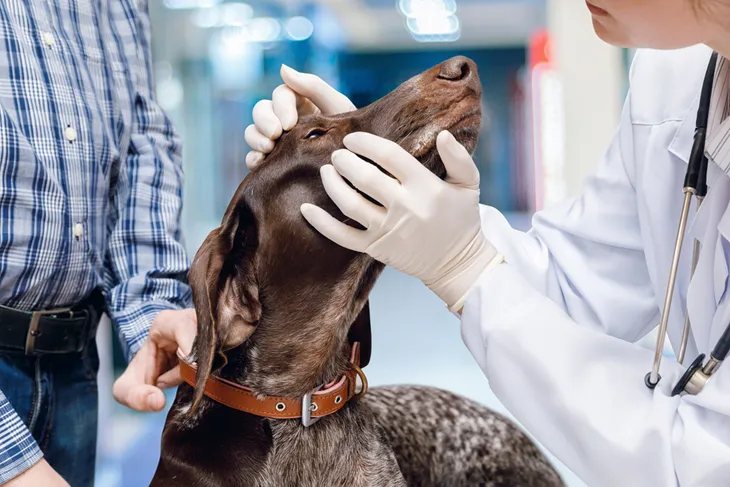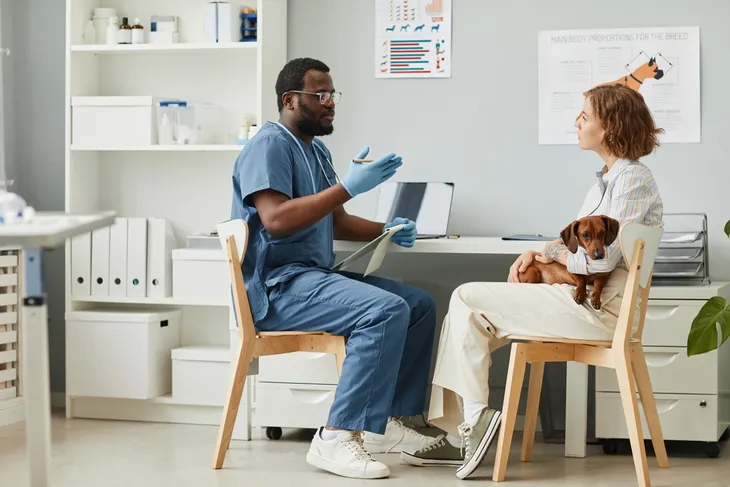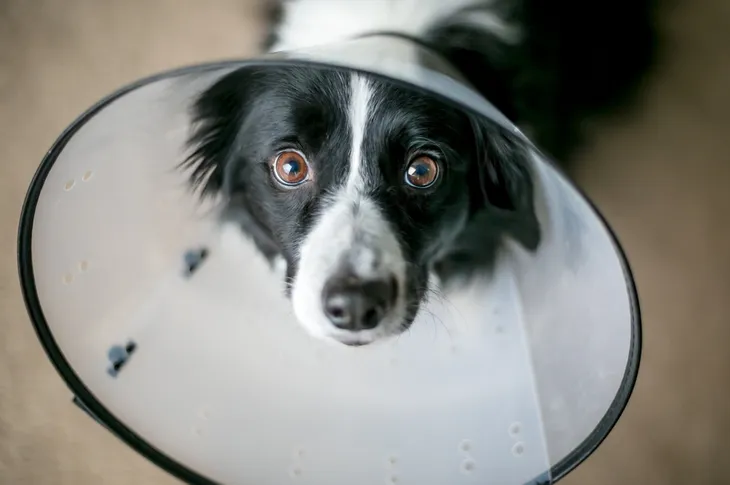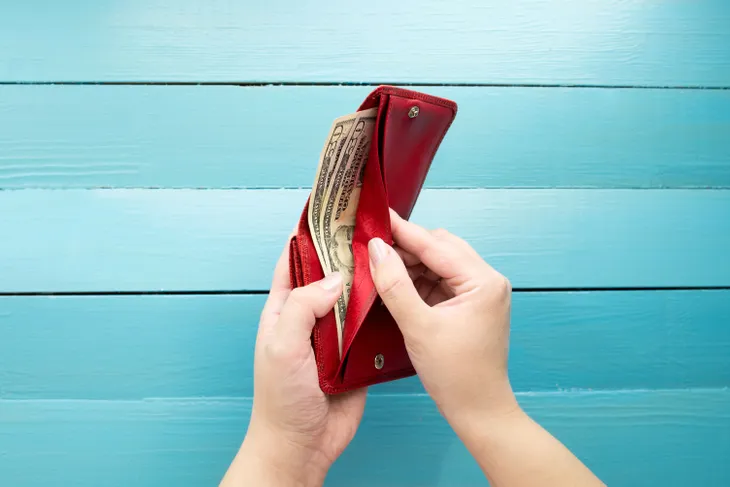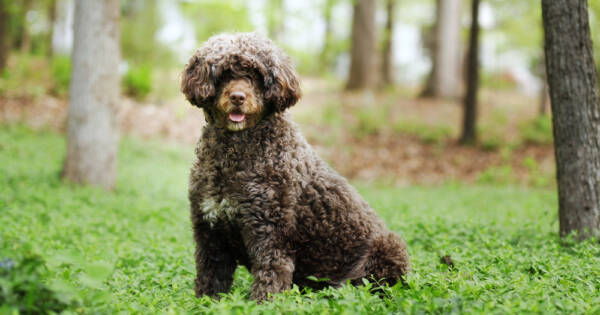- Cherry eye is a prolapse of the tear gland in your dog’s third eyelid, also known as the nictitating membrane.
- The common sign of cherry eye is a red, swollen mass in the corner of your dog’s eye. It can affect one or both eyes.
- While it’s not a life-threatening condition, you shouldn’t ignore it as it could lead to further complications if left untreated.
- Take your dog to the vet as soon as you notice signs of cherry eye.
There’s nothing fun about noticing something unusual on your pup. It can send your mind racing with worry and uncertainty. But if your dog develops a red bump in the corner of its eye, it’s likely cherry eye.
The good news is cherry eye is not a life-threatening condition, however, that doesn’t mean you should ignore it. Leaving cherry eye untreated may cause further complications like conjunctivitis, chronic dry eye, and in some cases, even a ruptured eye. Follow along to learn more about what cherry eye is, the common signs to look out for, and how to treat it.
What Is Cherry Eye in Dogs?
Did you know your dog has not two, but three eyelids? The third eyelid (also called the nictitating membrane) serves an important purpose of providing additional protection to the eye and cornea. It also helps spread tears across their eyes.
The nictitating membrane is located inside the lower eyelid and usually remains hidden so you can’t see. However, sometimes “the ligament that holds this gland in place stretches or detaches entirely from the orbital bone,” explains the Daily Paws. When this occurs, the gland may prolapse (pop out of place) and become visible, causing the condition known as cherry eye.
Is Cherry Eye Contagious?
Cherry eye is not a viral or bacterial infection, and therefore, no, it is not contagious to other dogs, pets, or humans. The condition usually results from inflammation in the ocular mucous membranes or weakness in the tissue.
Cherry eye is usually a genetic defect too. For this reason, breeders may want to consult their veterinarians to find out if a potential breeding dog has a history of the condition. This may help prevent passing it along to potential future puppies.
Common Signs and Symptoms of Cherry Eye in Dogs
The telltale sign of cherry eye is a red, swollen lump in the corner of your dog’s eye. According to Wag.com, cherry eye can progress quickly, which means the lump can appear suddenly.
The lump may also be irritating or itchy which may cause your dog to rub or paw at its eye. Other signs to be on the lookout for include squinting of the eye, dry eye, swelling, and pus-filled discharge.
When to See a Veterinarian
If you notice any signs of cherry eye, you should book an appointment with your vet right away. It’s not a medical emergency, however, it is important to deal with it as soon as possible as it may lead to other health problems over time.
The Small Door Veterinary points out that other conditions (some more serious) can cause similar symptoms to cherry eye, such as trauma to their eye or a foreign body in the eye. This could lead to loss of vision or worse — all the more reason to have your dog checked out by your vet.
What Causes Cherry Eye in Dogs?
Cherry eye develops when “the small ligament that holds the third eyelid gland in place either stretches or breaks,” explains the Small Door Veterinary. It’s also possible that one or both eyes will be affected by the condition.
Unfortunately, the reason why some dogs get it and others don’t isn’t fully understood. But while veterinarians aren’t quite sure what causes cherry eye, they do believe it could be more prone in certain breeds. Let’s take a look at which breeds have a higher risk next.
Risk Factors
While cherry eye can develop in any dog, certain breeds may be more at risk. The Daily Paws says English bulldogs, cocker spaniels, and cane corsos are just a few of the breeds that have a genetic predisposition to cherry eye. The source also says it commonly develops within their first year of life, making age a risk factor.
Other dog breeds may be at risk too. These may include:
- Terriers
- Pugs
- French bulldogs
- Boston terriers
- Boxers
- Mastiffs
- Basset hounds
- Beagles
- Rottweilers
- Saint bernards
In general, toy breeds, teacup dogs, and breeds with shorter muzzles tend also have an increased risk, explains the source. If you’re concerned about your puppy’s risk of cherry eye, talk to your vet.
How Is Cherry Eye Diagnosed?
If you suspect your dog may have cherry eye, book them an appointment with your vet for a proper diagnosis. To diagnose cherry eye, your vet will start by examining your dog’s eyes. Other diagnostic tests may be necessary in order for your vet to check the overall health of their eye.
The Small Door Veterinary also says your vet may recommend a Schirmer tear test, which measures your dog’s tear production. This is because cherry eye can lower your dog’s tear production which may lead to a condition called dry eye. The source says a fluorescein stain test may also be necessary to look for scratches on the cornea.
Treatment
The Daily Paws says after diagnosing cherry eye, your vet may prescribe eye drops to help reduce inflammation and to moisturize your dog’s eye. This can help reduce any pain and improve comfort.
It’s possible that eye drops may clear the condition, however, Wag.com says relapses are very common. In this case, the only treatment is surgical intervention. Let’s take a look at what this entails next.
Surgical Procedures
If your dog has an infection or is showing signs of irritation your vet will first treat that. Then, Wag.com says your vet will likely refer you to an eye specialist (an ophthalmologist) for the surgery.
The source says there are two possible procedures with the first one being suturing the gland to the orbital rim. The other possible procedure is called the pocket technique, which involves surgery to create a new pocket for the tear gland. The source explains, “The gland is protected by the tunnel put in place, and is tucked into the pocket, and then sutured.”
What to Expect During Recovery
The surgery requires general anesthesia, however, your dog will likely be able to go home the same day. After surgery, you’ll need to focus on their recovery. For starters your dog will need to wear an E-collar (also known as a cone), this will help protect their eye while it heals.
Even though the surgery is minimally invasive, The Small Door Veterinary says your vet will likely prescribe medication to help reduce pain and discomfort. Your dog will also need to rest for several days but they may be allowed to go for short leash walks. Be sure to follow the guidance of your vet.
Swelling can last for up to 2-weeks, however, it typically starts to go away in 7- to 10-days. You can also expect a follow-up appointment within 2-week of surgery.
Cost of Treatment
Taking care of your pup can be expensive and vet visits are no exception. The cost of surgery can depend on several factors such as if you need to treat one or both eyes. The Small Door Veterinary also says the size of your dog will also play a role in price, as larger breeds require higher doses of medication.
The price can also fluctuate depending on whether a specialist or general practitioner is performing the surgery. In general, the source says you can expect to pay anywhere from $700 to several thousand dollars.
While the surgery is expensive, think of it as an investment in your dog’s health. The source says, without treatment, your dog has a 50-percent chance of developing dry eye which can lead to even more complications and expensive treatments. If you have pet insurance you can contact your provider to find out if they can cover or subsidize the cost.
Can Cherry Eye Be Prevented?
No one wants their pup to get sick or develop a condition, or have to watch them go through surgery. We want to do everything we can to protect them, right? So you might be wondering if there is anything you can do to prevent cherry eye from developing in the first place. The short answer is, unfortunately, no, it’s not preventable.
The Spruce Pets says the best thing you can do for your dog is to get in the habit of regularly inspecting their eyes. Watch for signs of redness, irritation, unusual swelling, discharge, and the development of a mass. Paying close attention to your dog’s health can help you catch health problems early.



